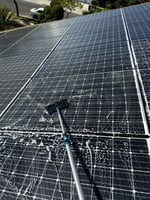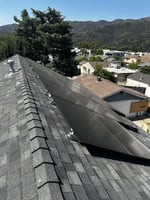Maximize Your Solar Power: The Importance of Regular Solar Panel Cleaning Solar panels are a...
Understanding Electric Vehicle Charging Levels and the Benefits of Level 2 Charging
Understanding Electric Vehicle Charging Levels and the Benefits of Level 2 Charging
As electric vehicles (EVs) become more popular, understanding the different charging options available is crucial for maximizing convenience and efficiency. This blog will explore the three levels of EV charging, focusing on the advantages of Level 2 charging and the potential benefits of combining it with solar power to manage energy consumption effectively.
Level 1 Charging: The Basics
Level 1 Charging uses a standard 120-volt household outlet and is the most accessible but slowest way to charge an electric vehicle. This method typically provides about 2 to 5 miles of range per hour of charging, making it suitable for overnight charging or for drivers with low daily mileage needs. Here are some key points about Level 1 charging:
• Voltage: 120 volts
• Amperage: 15-20 amps
• Charging Speed: 2-5 miles of range per hour
• Best For: Overnight charging, low daily mileage, and emergency use
Level 2 Charging: Faster and More Efficient
Level 2 Charging uses a 240-volt outlet, similar to what is used for large home appliances like dryers and air conditioners. This level of charging is significantly faster than Level 1, providing about 10 to 30 miles of range per hour of charging. Here are the main details:
• Voltage: 240 volts
• Amperage: 20-100 amps (typically around 30 amps)
• Charging Speed: 10-30 miles of range per hour
• Best For: Daily charging, quick top-ups, and households with higher mileage needs
Installing a Level 2 charging station at home can greatly enhance the convenience of owning an electric vehicle. It allows you to charge your car more quickly, making it easier to keep your vehicle ready for use at all times. However, it’s important to note that Level 2 chargers can draw a significant amount of power, similar to running a large appliance continuously.
Level 3 Charging: The Fastest Option
Level 3 Charging, also known as DC Fast Charging, is the fastest way to charge an electric vehicle but is usually only available at commercial charging stations. This method can provide 60 to 100 miles of range in just 20 minutes. Due to the high cost and power requirements, Level 3 chargers are not typically installed in residential settings. Here are the specifics:
• Voltage: 480 volts (or higher)
• Amperage: Varies
• Charging Speed: 60-100 miles of range in 20 minutes
• Best For: Long trips and quick charging at commercial locations
The Power Consumption of Level 2 Charging and the Solar Solution
While Level 2 charging is convenient and efficient, it does draw a substantial amount of power, similar to running an air conditioner. This increased energy usage can lead to higher electricity bills. However, combining a Level 2 charging station with a solar power system can help mitigate these costs and provide a more sustainable energy solution.
Benefits of Combining Level 2 Charging with Solar Power:
1. Cost Savings: Solar panels can offset the increased energy consumption from your EV charger, reducing your overall electricity bill.
2. Environmental Impact: Using solar energy to charge your EV further reduces your carbon footprint, contributing to a greener environment.
3. Energy Independence: Generating your own electricity with solar panels provides more control over your energy usage and costs, protecting you from rising utility rates.
Introducing Bi-Directional EV Chargers
Emerging technology in the EV industry includes bi-directional EV chargers, such as those found in the Ford F-150 Lightning. These chargers not only allow you to charge your vehicle but also enable your EV to supply power back to your home or the grid. This capability is particularly useful during power outages or peak demand times, providing a backup power source and enhancing your home’s energy resilience.
Key Features of Bi-Directional Chargers:
• Power Supply: Your EV can act as a backup generator, supplying power to your home during outages.
• Grid Support: Excess energy stored in your EV can be fed back to the grid, potentially earning you credits from your utility company.
• Energy Management: Integrating bi-directional charging with a solar power system can optimize energy use, ensuring your home remains powered while minimizing reliance on the grid.
Conclusion
Investing in a Level 2 charging station is a smart choice for electric vehicle owners looking for faster and more efficient charging options. While it does consume a significant amount of power, combining it with a solar power system and considering bi-directional charging technology can offer substantial benefits, including cost savings and environmental advantages.
Ready to upgrade your home with a Level 2 EV charger and explore bi-directional charging? Contact Eco Solar and Electric today to learn more about our installation services and how we can help you create a sustainable and efficient home energy system. Call us at [Your Phone Number] or visit our website to schedule a consultation.
Ready to upgrade your home with a Level 2 EV charger and solar power? Contact Eco Solar and Electric today to learn more about our installation services and how we can help you create a sustainable and efficient home energy system. Call us at 323-928-8880 or visit our website to schedule a consultation.




